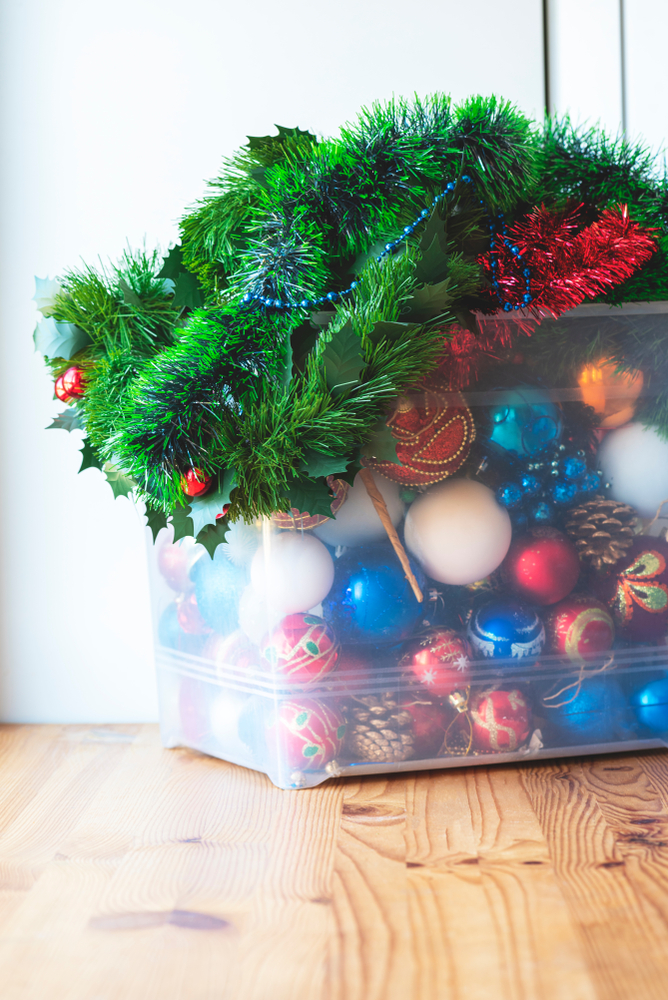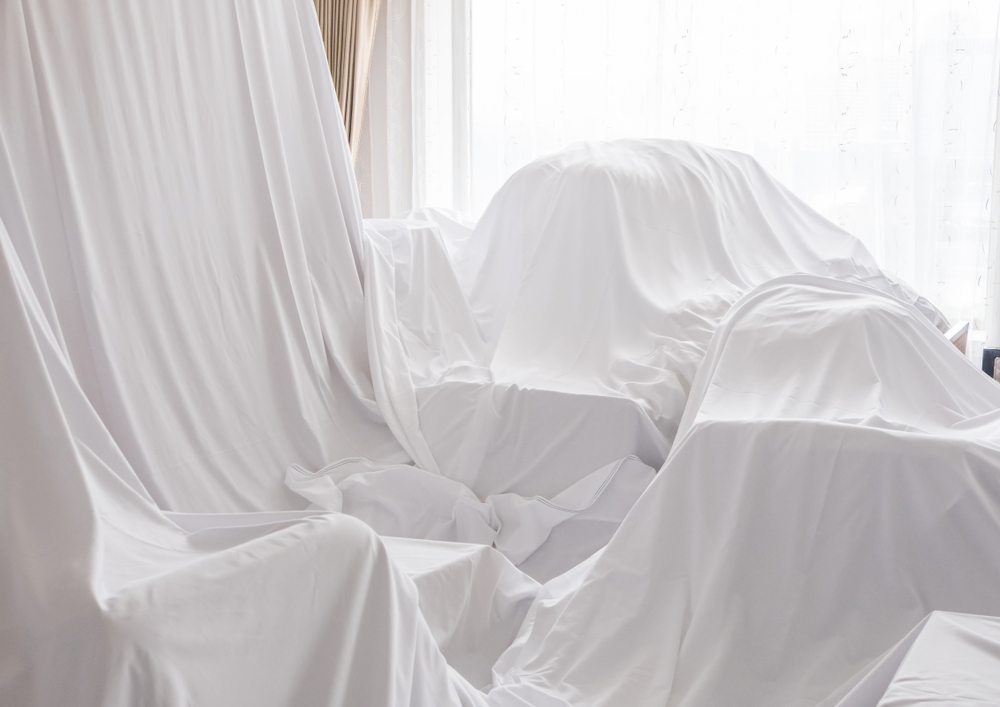There are generally two types of renters: short-term, storing for 3 months or less; and long-term, storing for longer than 3 months. Regardless of whether you use a storage unit for 2 months or 2 years (or longer!), there are some steps you should take for how to pack and maintain your self storage unit to keep your valuables safe.
Decide What Type of Storing You’re Doing Before You Pack Your Storage Unit
Long-Term Storage
If you are a long-term storage user, it is crucial to protect your items for future use and to plan for all seasons of weather and all ranges of temperatures. The first step is ensuring you select the correct long-term storage unit type and size for your needs, taking into consideration the time of year you are storing and how long you plan to keep your stuff in storage. Ask yourself, “Will I be storing over the hot summer or cold winter months?”, or “Will I be storing year round through all seasons?”
If you will have your storage unit during the heat of summer (June-September) and you are planning to store sensitive electronics or valuable furniture, you should opt for the temperature control storage unit. These units keep the temperature at a range of 55-80 degrees all year, which will protect your items from damage caused by extreme temperatures.
If you are storing over the colder months (October-April) and you are planning to store extra clothes and your summer items (like pool toys and rafts, bikes, rollerblades, kayaks, patio table, and chairs, etc.), then you can choose a drive-up or interior access storage unit. These items will typically not be affected by extremely cold temperatures.
Short-Term Storage
If you are a short-term storage user, depending on the time of year, you may be able to get away with selecting any available storage unit! If you are storing for just a month or two, and it is Spring or Fall, most items will be fine in a drive-up or interior access storage unit. During these seasons, the temperatures are usually fairly mild and damage from the extremes is unlikely.
If you need your storage unit during July or August though, even just one month in those high temperatures can cause damage. If your items are sensitive to extremes, you should select the temperature control unit event for such a short period of time, to help prevent damage.
Whether you are storing short-term or long-term, you can benefit from these tips on organization and unit maintenance. By following these, your storage experience will be a more pleasant one all around.
How to Pack Items for Your Self Storage Unit
Once you select the best unit size and type for your needs, you should gather up or purchase some of these items to make packing and organizing easier:
Boxes-
We sell specially treated boxes in our retail shop inside every rental office. They are manufactured for storage over long periods of time and are treated to help prevent mildew. They are also crush-tested and will stand up to frequent use without tearing, denting, or smashing in. We have several sizes to choose from depending on what you need to pack inside. You can choose several of each size so they stack just right inside your storage unit, maximizing your space.
Never use plastic bags and standard cardboard boxes (like the free ones at the supermarket), especially if you are storing for longer periods of time. Plastic bags will cause moisture to collect over time which can damage what’s inside. And those free cardboard boxes may get soft due to any excess moisture and start crushing in, as they are designed for temporary use and will break down.
Plastic storage totes –

Plastic storage totes are also a great choice, as you can get a quick idea of what’s inside just by looking if you select the clear ones. They also stack nicely and many have comfortable handles for lifting and moving. These are a top find when looking for how to pack your self storage unit in the best way.
Plain (unprinted) newsprint, packing paper and/or bubble wrap–
You are going to be wrapping up fragile items and protecting surfaces that you do not want damaged. Blank newsprint and packing paper are great for dishes and small knick-knacks. Bubble wrap is perfect for porcelain and crystal, and items that break more easily. You can also use bubble wrap to protect the legs of tables and to cushion mirrors and framed artwork inside boxes.
Box labels and markers –
These just aren’t used often enough in storage, and they should be. You will want to label all boxes and totes with what is inside, and maybe which room they belong to in your home. Put a label on at least two sides and the top of each box or tote so you can easily know what’s inside without having to open them up.

Pallets, tarps or dust covers –
If you have access to pallets (you can ask at department or grocery stores because many times they just throw them away), they are great to get your items off the floor and promote better air flow. Allowing space between the walls and floor along with other items in the unit is best.
Use tarps or dust covers to cover your large furniture and appliances to protect them from dust and damage when things are stacked on top.
Pest repellent and dampness removers –
You never know what your “neighbor” is storing inside their unit. So, come prepared with pest repellent and spray it along the bottom and around all sides of the storage unit before you place your items in there. Dampness removers are valuable items to have to pull the moisture out of the air and prevent your wooden furniture and similar items from absorbing it, which can cause damage over time.
Visit your storage unit!
Even if you plan to set it and forget it, you should plan to visit your storage unit once per season, or at least twice a year. At these visits, check on your valuables. Make sure they are holding up and not being damaged by anything else inside the unit. If you had some of those free boxes and they are starting to fall apart, replace them with the specially treated boxes from our retail store. Spray some more pest repellent to keep that protective level up just in case, and refill or replace your dampness remover. The sooner possible problems are found, the more likely they can be fixed.
How to Organize and Pack Items In Your Self Storage Unit
Make sure you organize what’s inside so you can get to items quickly that you need more often. The best thing to do is sort your items by the likelihood of needing them before the others, and pack them accordingly. You can put the items you don’t need very often at the back of the unit and on the bottom underneath other items. Place the items you need regularly on top of the less needed items, and keep them toward the front of the storage unit. If you are able to leave space for a walkway, this is also helpful if you need access to particular items in the unit. Instead of pulling everything out, you are able to get to what you need without so much hassle.
This is where those labels come in handy. Make sure a detailed description of the items is on the outside of your boxes – on at least two sides and the top. If you have a lot of items to keep in storage, create a master list showing which items are located where inside the unit. Hang that list to the left or right of the door either with a magnet hook or tape it to the wall.
When storing furniture, be sure to thoroughly clean and polish it before you put it in storage. This will seal it up nicely and add a layer of protection. Disassembling any furniture you are able to will help maximize space. This will also protect the surfaces from being damaged. So you don’t lose hardware and fasteners for the different items, put them in a small bag, label the bag which item they belong to and tape it to a larger piece of the item. If the larger items cannot easily be broken down, utilizing them to pack other items inside or on top of them can save you space as well. You may want to cover tables or shelves with tarps, canvas or dust covers so you don’t mark the surface.
If you are storing appliances and electronics, make sure that excess dust and interior spaces are clean and dry first. Any doors on appliances should be left ajar to allow for airflow and avoid the collection of mildew and mold inside. Place smaller boxes and items inside doors and drawers after placed in storage to maximize space. Electronics should be packed in original boxes whenever possible because they were made for storage in warehouses for longer periods of time and are designed to protect that specific item.
When storing clothing and fabrics, vacuum seal your items if you can. This is a best practice because it not only protects your items from moisture and air damage, but it also takes up the least amount of space when storing. Also avoid folding your clothing if possible, as it can create stress tears and permanent fold marks when stored for long periods of time. Also avoid storing clothing boxes directly on the floor, especially if the items are not vacuum sealed inside and/or the box is cardboard. Moisture can collect more readily and damage your items.
Recap: How to Pack and Maintain a Self Storage Unit
Let’s recap some of the most important tips when storing, whether it be short or long term. It’s better to be prepared for the long-term just in case you end up needing the storage unit longer than you planned:
- First, determine the size and type of unit that best suits your needs. Keep in mind, going a little larger than you think you need is a good idea. This can save you from needing to move your things to a larger unit over time (which does happen) when you realize you don’t have enough space.
- Secondly, be prepared with the supplies you need before you start moving your stuff to storage. Make sure to gather or purchase your boxes, packing paper, bubble wrap and dust covers ahead of time. We have all of these items available in our retail shop to make it easier for you.
- Lastly, details, details, details. Plan ahead and organize your storage unit and all the contents. Clean your items before you store them to protect them. And the more labeling you do first, the easier to sort and find things in the future. Just because you know which box has what and where you placed it in the storage unit now, does not mean you will remember in six months or a year.
If you have any questions or comments about maintaining your storage unit, you can contact us for more information. And, if you have other helpful tips please leave them in the comments below so everyone can benefit from your storage experience.
If you have your checklist ready and you need a storage unit now, you can reserve or rent a storage unit online 24/7.
